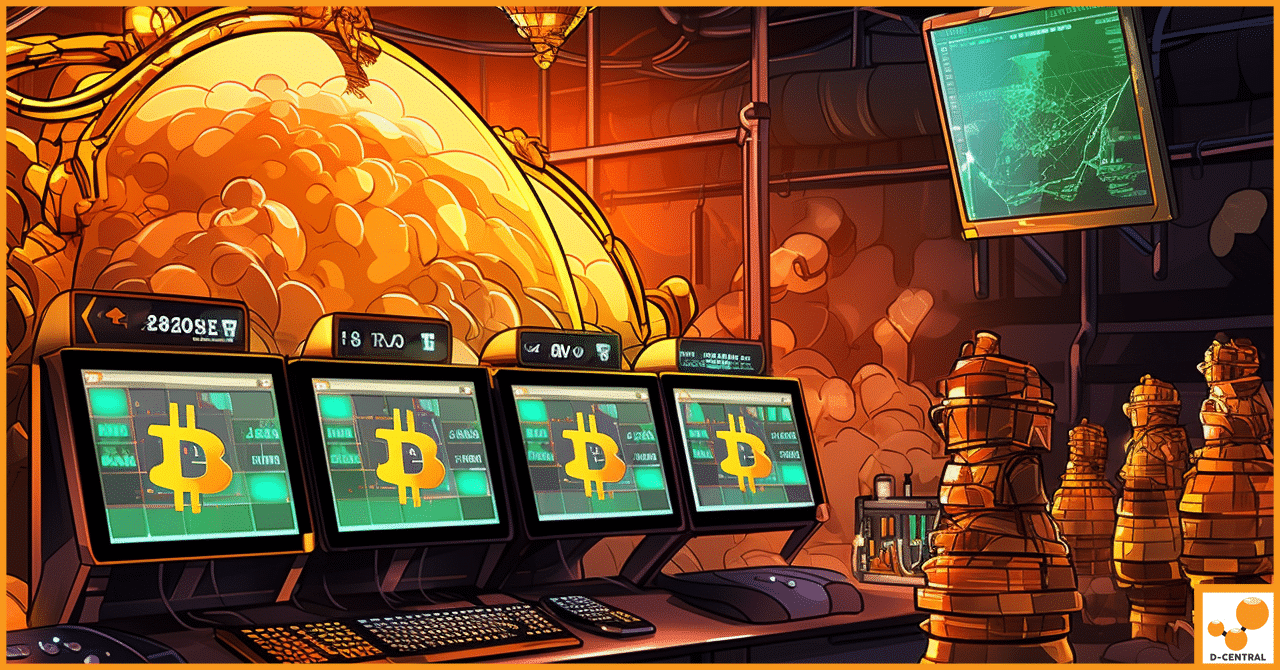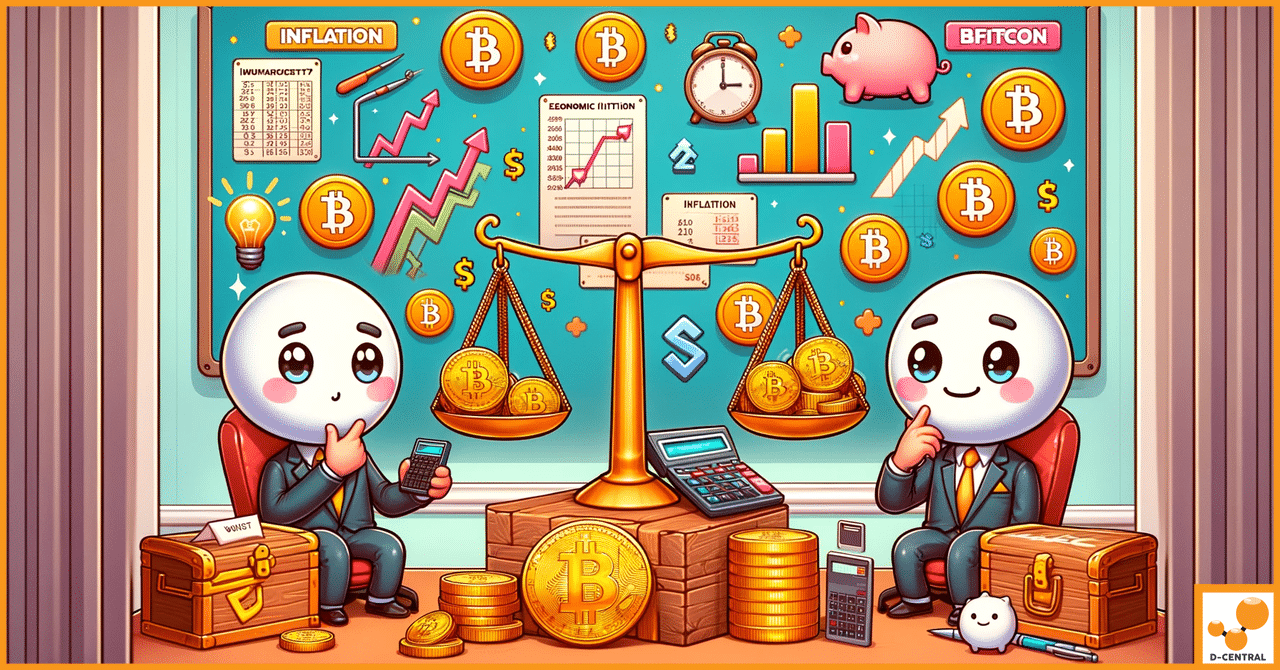
Inflation vs Deflation: Why You Should Care About Sound Money
Information Theory, a mathematical framework for understanding information, was first introduced by Claude Shannon in his groundbreaking 1948 paper, “A
4479 Desserte Nord Autoroute 440, Laval, QC H7P 6E2

Bitcoin has come a long way since its inception, and now, with the introduction of ordinals, the possibilities for innovation and value storage are endless. But what exactly are ordinals, and how do they differ from traditional bitcoins or satoshis? In this blog post, we will delve into the world of ordinals and non-fungible tokens (NFTs) stored on the Bitcoin blockchain, exploring their benefits, drawbacks, and whether they are a worthwhile addition to the network. Join us as we discover the potential of this cutting-edge technology and how it can revolutionize the way we use and think about Bitcoin.
Ordinals are a type of NFT that is based on the mathematics of Bitcoin and linked to individual satoshis. They serve as unique identifiers for each satoshi and consist of letters from A to Z, with shorter names representing satoshis mined later. Some ordinals may have special meaning or value due to their historical significance or mathematical properties. The ordinal community is dedicated to cataloging and collecting early NFTs. Ordinals can store digital artifacts such as text, images, and HTML code, on the Bitcoin blockchain. They use existing Bitcoin infrastructure, making it possible to broadcast digital files on the blockchain. However, potential drawbacks should also be considered before implementing this technology.
The Inscription Content Model is a crucial technology that enables the creation and transmission of digital files on the Bitcoin blockchain. It operates through a two-step commit and reveal process, where a taproot output is formed in the first phase. This output incorporates a script that holds the inscription content, which is then disclosed on the blockchain in the second step. These inscriptions consist of two components: an ord value to distinguish it from other envelope uses, and either plain text or multimedia data with a corresponding MIME type. The envelope enables multiple data inputs to be incorporated into an existing locking script without altering its meaning.
By utilizing inscriptions, users can store digital artifacts within the Bitcoin infrastructure, making it possible to preserve plain text or multimedia data with a designated MIME type. These inscribed sats, along with their accompanying metadata, provide developers with a robust platform to develop new applications. Although there is a limit of 520 bytes for each individual data input due to taproot restrictions, multiple data inputs can be utilized for larger inscriptions when necessary.
Bitcoin and Ethereum are both blockchain platforms that have different use cases. Bitcoin’s main use case is as a decentralized digital currency while Ethereum’s main use case is as a platform for decentralized applications. However, when it comes to NFTs (Non-Fungible Tokens), Bitcoin is a better candidate due to its superior blockchain.
Ordinal NFTs are unique digital assets with an assigned numerical value that can be used for various purposes such as verifying ownership or tracking transactions on the blockchain. The superiority of Bitcoin’s blockchain makes it a better candidate for NFTs compared to Ethereum because it offers higher security and transparency. With its decentralized structure, users have more control over their assets, and the use of ordinals makes it easier for developers to create solutions that track complex transactions in real-time.
Overall, the growing popularity of NFTs and their potential to revolutionize the blockchain industry highlights the importance of ordinal NFTs and the role they will play in shaping the future of blockchain technology.
The Pros of Introducing NFTs onto the Bitcoin Blockchain include:
The Cons of Introducing NFTs onto the Bitcoin Blockchain include:
The integration of Non-Fungible Tokens (NFTs) into the Bitcoin blockchain could have several potential impacts on security, fungibility, and transaction fees. While NFTs are designed to be more resistant to tampering and manipulation due to their improved provenance tracking capabilities, they can also potentially increase network congestion leading to longer wait times and higher fees per transaction. Additionally, integrating NFTs into the Bitcoin network could increase liquidity by making them available across different exchanges; however, this increased liquidity could lead to lower or higher transaction fees depending on how much data is stored in each token. Ultimately, it’s important for miners and other stakeholders to consider these potential impacts when assessing the current state and future impact of NFTs on the Bitcoin network.
Ordinal transactions on the Bitcoin blockchain can have both positive and negative impacts on miner revenue. On the positive side, as the number of Ordinal transactions increases, it increases the amount of transaction fees received by miners, which can boost their revenue. On the negative side, the cost of running an archival node, which is responsible for storing all historical transaction data on the blockchain, can increase with a higher volume of Ordinal transactions. It should be noted that there is no real debate about how much compensation miners should receive for processing these transactions, as the free market and the Bitcoin fee market will determine what is a fair fee to include Ordinals. This allows for a self-regulating system, ensuring that the most efficient and profitable approach will be taken.
The integration of Non-Fungible Tokens (NFTs) into the Bitcoin blockchain could have a wide range of potential impacts on security, fungibility, and transaction fees. As more Ordinal transactions are added to the network, miners should be aware that this may increase their costs associated with running an archival node while also potentially increasing their revenue from higher transaction fees. Ultimately, it is important for stakeholders to consider all these possible implications when assessing how NFTs might impact the future development of the Bitcoin network. It’s clear that there is still much work to be done in order to fully understand how integrating smart contracts onto existing blockchains like Bitcoin will affect its long term success and sustainability.
What are ordinals?
Ordinals are a type of Non-Fungible Token (NFT) that are based on the mathematics of Bitcoin and linked to individual satoshis. They serve as unique identifiers and consist of letters from A to Z, with shorter names representing satoshis mined later. They can store digital artifacts on the Bitcoin blockchain and use existing Bitcoin infrastructure.
What is the Inscription Content Model?
The Inscription Content Model is a technology that enables the creation and transmission of digital files on the Bitcoin blockchain. It operates through a two-step commit and reveal process and allows for the storage of plain text or multimedia data with a designated MIME type. This technology makes it possible to preserve digital artifacts within the Bitcoin infrastructure.
Why is Bitcoin a better candidate for NFTs compared to Ethereum?
Bitcoin’s blockchain offers higher security and transparency compared to Ethereum, making it a better candidate for NFTs. With its decentralized structure, users have more control over their assets, and the use of ordinals makes it easier for developers to create solutions that track complex transactions in real-time.
What are the pros of introducing NFTs onto the Bitcoin blockchain?
The pros of introducing NFTs onto the Bitcoin blockchain include increased security, improved liquidity, improved provenance tracking, and fractional ownership of digital assets.
What are the cons of introducing NFTs onto the Bitcoin blockchain?
The cons of introducing NFTs onto the Bitcoin blockchain include potential network congestion, increased complexity, concerns about taint on satoshis, and potential cost and hardware requirements for full nodes.
What is the potential impact of integrating NFTs into the Bitcoin blockchain on security, fungibility, and transaction fees?
Integrating NFTs into the Bitcoin blockchain could have impacts on security, fungibility, and transaction fees. NFTs offer improved provenance tracking but could potentially increase network congestion and transaction fees. Miners and stakeholders need to consider these potential impacts.
How are miners compensated for processing ordinal transactions?
Miners receive compensation in the form of transaction fees for processing ordinal transactions. As the number of ordinal transactions increases, it can boost miner revenue. The fair fee for including ordinals is determined by the free market and the Bitcoin fee market.
DISCLAIMER: D-Central Technologies and its associated content, including this blog, do not serve as financial advisors or official investment advisors. The insights and opinions shared here or by any guests featured in our content are provided purely for informational and educational purposes. Such communications should not be interpreted as financial, investment, legal, tax, or any form of specific advice. We are committed to advancing the knowledge and understanding of Bitcoin and its potential impact on society. However, we urge our community to proceed with caution and informed judgment in all related endeavors.
Related Posts

Information Theory, a mathematical framework for understanding information, was first introduced by Claude Shannon in his groundbreaking 1948 paper, “A

In the ever-evolving landscape of cryptocurrency, Bitcoin mining emerges as a cornerstone activity, underpinning the decentralized ethos of digital currency.

Inflation, a term that often stirs concern among economists, investors, and everyday consumers, refers to the rate at which the